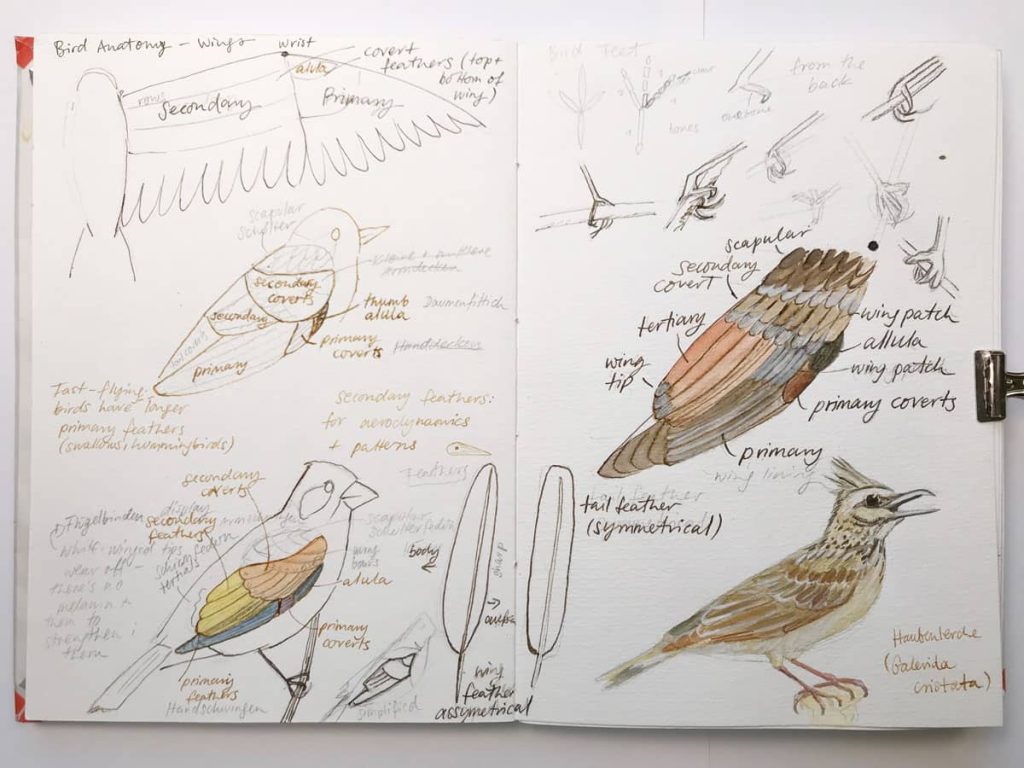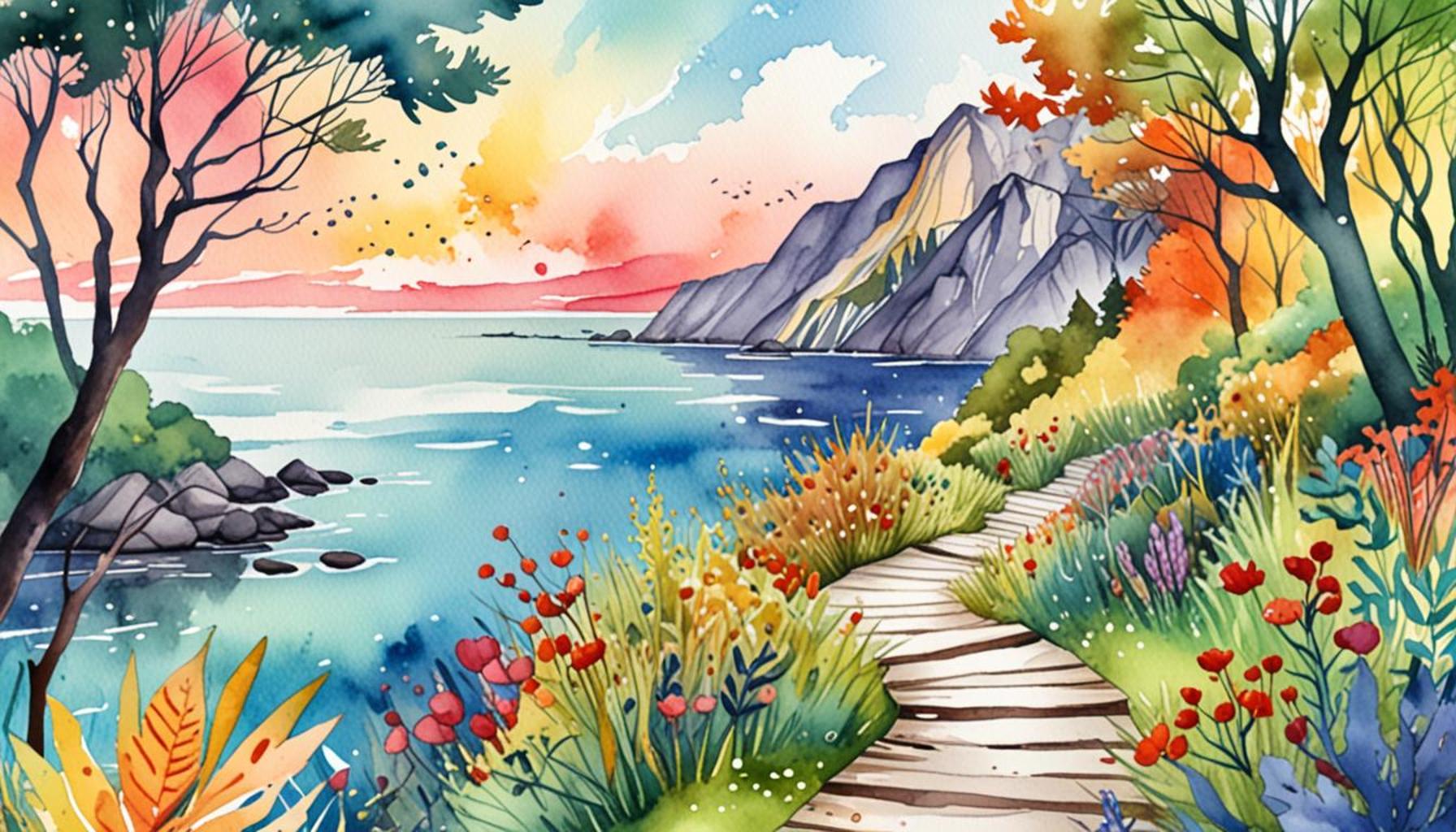The Art of Observation: Drawing and Painting Outdoors

Embracing the Splendor of Nature through Artistic Observation
In a fast-paced world dominated by technology, the simple act of observing nature can serve as an antidote to distractions, particularly for artists. Whether it is sketching a serene landscape or splashing vibrant colors onto a canvas, honing the art of observation allows artists to transform fleeting moments into captivating pieces of art. This process of deep observation invites artists to engage with their environment in meaningful and enriching ways.
Outdoor settings serve as abundant sources of inspiration, rich with diverse elements that can influence artistic creations. By immersing themselves in nature, artists unlock a myriad of components, such as:
- Natural Light: The sun rises and sets, casting a tapestry of light that changes colors throughout the day. Early mornings can provide soft, diffused light, while late afternoons often result in bold, golden hues that enhance textures and shadows. Artists like Claude Monet showcased how natural light can alter mood and perception within a single scene.
- Textures: The roughness of bark, the delicacy of leaves, and the softness of clouds contribute to a scene’s richness. Artists who incorporate these variations add depth and interest to their work. The layering of paint, as seen in Van Gogh’s landscapes, exemplifies how texture can convey emotion and form.
- Weather: Dynamic weather conditions can completely redefine a scene. A rainy day might inspire artists to depict the tranquility of droplets on petals, while windy days could capture the energy of swaying trees. Artists like John Constable expertly represented weather’s influence in their landscapes, creating atmospheres that evoke strong emotional responses.
Practicing observation outdoors does not just enhance artistic skill; it cultivates valuable personal qualities crucial to any artist’s journey. Several benefits come from this immersion in nature:
- Enhanced Techniques: The need to capture the essence of an ever-changing scene necessitates focused practice. Each brushstroke or pencil line becomes an exercise in translating what one sees into visual language, refining one’s technique and fostering artistic growth.
- Increased Patience: Nature operates on its own timeline. Waiting for the perfect moment—be it the right sunlight or a fleeting animal pose—can be challenging yet highly rewarding. This cultivation of patience often helps in other aspects of life, encouraging mindfulness and presence.
- Greater Connection: Engaging deeply with nature can lead to stronger emotional connections between the artist and their subject. Such connections often result in artwork that possesses depth and resonates with viewers, creating dialogues that go beyond mere aesthetic value.
As you venture into the world of outdoor artistry, remember that each stroke on the canvas is a conversation with the environment. By employing observation techniques, you not only improve your skills but also foster a profound appreciation for the beauty that surrounds you. Nature becomes more than just inspiration; it evolves into a partner in your creative journey, urging you to explore, reflect, and express your unique perspective.
DISCOVER MORE: Click here to dive deeper into camping bliss

Diving Deeper into the Art of Observation
As artists, harnessing the art of observation requires not just a keen eye, but also an open heart and a willingness to explore the world around us. When you step outside, you are greeted with a vast array of sights, sounds, and sensations that can serve as a profound source of inspiration for your creative endeavors. This process begins with the ability to fully engage with your surroundings, and it involves several key techniques that can enhance one’s outdoor artistic practice.
One of the most effective ways to sharpen your observational skills is through the practice of sketching. Rapid sketching or quick studies can help you capture the essence of a scene without getting bogged down in detail. This method encourages you to focus on the overall composition, lighting, and mood, rather than attempting to replicate every minute feature. Use lightweight sketchbooks and portable drawing tools to facilitate this spontaneous practice, allowing you to sketch in a variety of settings with ease.
Another technique to embrace is the art of notan, a Japanese term that refers to the interplay of light and dark. By focusing on the balance between these elements, you can visualize the structure and form of your subject more clearly. Artists can engage with notan by utilizing black and white sketches to analyze patterns before introducing colors. This approach can elevate your work by ensuring a strong foundation, which is especially vital when capturing complex outdoor scenes.
In addition to these methods, consider immersing yourself in the principles of color theory. Observing nature’s color palette offers an incredible opportunity to analyze how colors interact in the world. Pay attention to how colors shift in response to changes in light, the time of day, and seasons. Utilizing color swatches or a limited palette while painting outdoors can enhance your understanding of tonal relationships and create harmonious compositions.
Furthermore, developing an acute awareness of perspective and composition is essential for translating the beauty of outdoor settings onto your canvas. Explore the use of leading lines—such as paths or rivers—that guide the viewer’s eye through your artwork. Experiment with different angles and framing; a change in viewpoint can dramatically alter the impact of the final piece. For instance, bird’s-eye views may convey a sense of vastness, while worm’s-eye views can imply intimacy.
- Emphasizing the Foreground: Include elements in the foreground to add depth. This technique draws the viewer into the piece, enhancing the feeling of being “there.”
- Framing Elements: Use natural elements, like branches or rocks, to frame your subject. This can add a significant focal point to your work.
- Negative Space: Don’t hesitate to leave areas of the canvas empty. Negative space can create balance and highlight the subjects of interest.
In conclusion, the art of observation when drawing and painting outdoors enriches not only your artistic skills but also your appreciation for the wonders of nature. By applying these techniques, you will find yourself becoming more attuned to your environment, allowing each artistic endeavor to unfold as an exhilarating journey rather than a mere task. Each outdoor experience offers an opportunity for growth, creativity, and personal fulfillment, inviting you to explore the intricate beauty that surrounds us.
| Category | Description |
|---|---|
| Enhanced Creativity | Diving into nature fosters innovative thinking and fresh perspectives for artists. |
| Improved Observation Skills | Working outdoors sharpens an artist’s ability to notice details, colors, and forms in their surroundings. |
When keenly observing nature, artists often find their creativity blossoms. The act of observing the interplay of light and shadow can lead to unique artistic interpretations that would otherwise remain unseen. This connection to nature enhances inspiration, giving rise to original compositions that resonate deeply with an audience. Moreover, engaging directly with the outdoors encourages artists to extract color palettes from their environment, nurturing their palette with earthy tones and vibrant shades that reflect the beauty of the natural world.Furthermore, painting and drawing in an outdoor setting leads to a significant improvement in observation skills. Artists who practice this form develop a stronger ability to assess spatial relationships and anatomical forms. As they replicate their surroundings, they fine-tune their gaze, resulting in artwork that captures not only the visual but also the emotional essence of the landscape or subject matter. By harnessing both creativity and observation, artists can truly elevate their craft. Through observation, the mundane transforms into the extraordinary, revealing deeper meanings embedded in every scene.
DISCOVER MORE: Click here for mindfulness practices in nature
Techniques to Elevate Your Outdoor Artistic Experience
As you refine your skills in the art of observation, it’s vital to incorporate various techniques that can further enhance your outdoor painting and drawing experience. Each approach opens new dimensions of creativity and fosters a deeper connection to the natural environment. One such method is plein air painting, which involves painting outdoors in real-time, capturing the scene as it unfolds before your eyes. This practice compels you to actively engage with your surroundings, forcing you to make quick decisions about composition, color, and light, all while under the ever-changing conditions of nature.
Plein air painting encourages spontaneity and embraces the unpredictability of outdoor conditions. Setting up your easel in local parks, nature reserves, or even busy urban spaces offers a chance to experience different atmospheres that present unique challenges and rewards. Consider using a compact, portable set of paints and brushes designed for outdoor work, as transportation and setup facilitate these explorations significantly. Not only does this practice sharpen your observational skills, but it also nurtures your ability to respond to the nuances that emerge throughout the day, such as shifting light patterns or moving shadows.
Another powerful tool for honing your observation skills is to practice mindful observation. This technique involves slowing down and tuning into your environment using all five senses. Instead of simply looking at the colors and forms, take a moment to listen to the sounds of chirping birds or rustling leaves, breathe in the scents of blooming flowers or damp earth, and feel the texture of surfaces around you. By engaging more deeply with your surroundings, your art can convey the essence of the moment beyond the visual aspect. Consider journaling about these sensory experiences to add layers of meaning to your artistic practice.
Moreover, employing the technique of visual storytelling can enrich your outdoor work. Every scene tells a story; whether it’s a tranquil lakeside at dawn or a bustling cityscape at noon, how you choose to portray it can evoke specific emotions and narratives. Pay attention to people interacting with the environment—children playing, people walking dogs, or animals foraging. Incorporating these elements into your artwork not only adds a layer of interest but also invites viewers to engage more meaningfully with your piece.
- Layering Your Work: Consider preparing multiple canvases or sheets of paper in advance. Layering different scenes will allow you to capture the same subject under varying lights or weather conditions, revealing the transformations in mood and atmosphere.
- Capturing Time: Create time-lapse sketches. Set up in one location and return multiple times over a week or month to observe how the scene evolves through different seasons, weather changes, and light shifts.
- Artistic Intent: Before beginning your outdoor work, take a moment to reflect on what emotions or experiences you wish to invoke. This clarity can guide your decisions regarding color, composition, and style.
Exploring these various techniques not only elevates your skills as an artist but also serves to deepen your appreciation for the beauty and complexity of the natural world. Engaging with these methods amplifies the potential for creativity and innovation in your artwork, providing an enriching experience that fosters both personal and artistic growth.
DIVE DEEPER: Click here to discover the beauty of nature photography
Conclusion
In conclusion, mastering the art of observation through outdoor drawing and painting is a rewarding journey that transcends mere technique. By embracing methods like plein air painting, artists are encouraged to immerse themselves in the dynamic beauty of nature, fostering a direct connection to their environment. The practice not only hones one’s technical abilities but also cultivates heightened awareness of light, color, and composition as influenced by changing outdoor conditions.
Additionally, incorporating mindful observation and visual storytelling deepens the artistic experience, allowing creators to engage with their surroundings on multiple sensory levels. Each brushstroke becomes a moment captured, telling a story that resonates beyond visual details. As artists explore these techniques, they not only enrich their own work but also invite viewers to participate in a shared narrative woven through time and space.
Moreover, techniques such as layering canvases and capturing time through repeated visits to the same location provide invaluable insights into an ever-evolving world. These explorations not only reveal the subtleties of nature but also foster a sense of patience and reflection among artists.
Ultimately, the exploration of outdoor drawing and painting fuels creative expression and personal growth. As you step outside with your sketchbook or easel, consider this an opportunity not only to create art but also to discover new facets of connection with the world around you. The art of observation is, indeed, a pathway to inspiration that can transform simple outdoor experiences into profound artistic statements.


